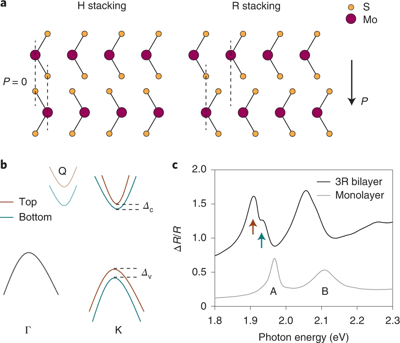Share this
Authors
Dongyang Yang, Jingda Wu, Benjamin T. Zhou, Jing Liang, Toshiya Ideue, Teri Siu, Kashif Masud Awan, Kenji Watanabe, Takashi Taniguchi, Yoshihiro Iwasa, Marcel Franz, and Ziliang Ye
Abstract
Stacking order in van der Waals materials determines the coupling between atomic layers and is therefore the key to materials’ properties. Recently, ferroelectricity, a phenomenon exhibiting reversible spontaneous electrical polarization, has been observed in zero-degree aligned van der Waals structures. In these artificial stacks, the single-domain size is limited by angle misalignment. Here we show that naturally rhombohedrally stacked MoS2can host a homogeneous spontaneous polarization throughout the exfoliated flakes, free of misalignment. Utilizing this homogeneous polarization and its induced depolarization field, we build a graphene–MoS2-based photovoltaic device with high efficiency. Few-layer MoS2 is thinner than most oxide-based ferroelectric films, which allows us to maximize the depolarization field and study its impact at the atomically thin limit, whereas the highly uniform polarization in the commensurate crystal enables a tangible path for upscaling. The external quantum efficiency of our device is up to 16% at room temperature, over one order larger than the highest efficiency observed in bulk photovoltaic devices, owing to the reduced screening in graphene, exciton-enhanced light–matter interaction and ultrafast interlayer relaxation. Our findings make rhombohedral transition metal dichalcogenides a promising candidate for applications such as energy-efficient photodetection with high speed and programmable polarity.
Nature Photonics: https://www.nature.com/articles/s41566-022-01008-9
These Related Stories

